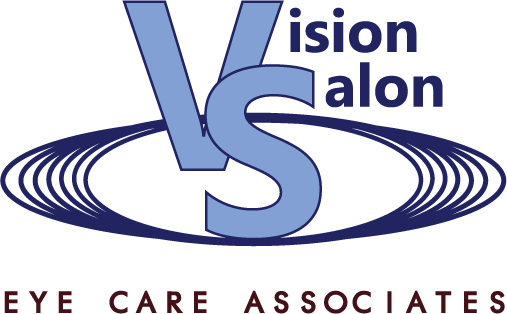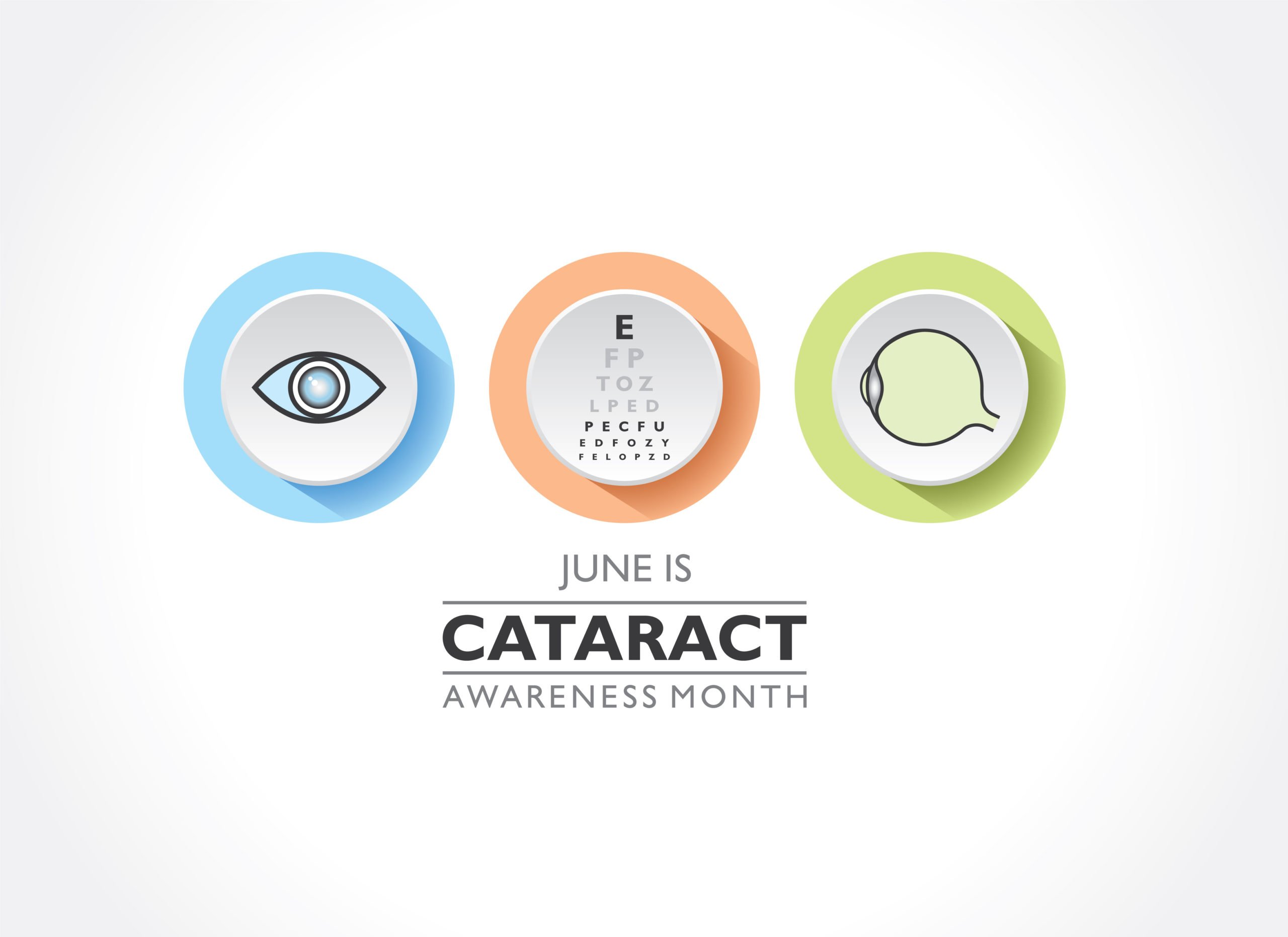June is Cataract Awareness Month
Prevent Blindness has declared June to be Cataract Awareness Month, and the purpose is to educate the public on cataracts, which is the leading cause of vision loss in the United States.
In honor of Cataract Awareness Month, we will share some basic information about cataracts: what they are, reasons they develop, risk factors, symptoms, and treatment for cataracts.
What are Cataracts?
The eyes have a lens located behind the iris, and this lens focuses light passing through the eye and produces images on the retina, the light-sensitive membrane in the back of the eye. Proteins can build up on this normally clear lens, and when this happens, the lens can become cloudy. This cloudiness blocks the passage of light to the retina, and this causes changes in vision.
The cloudy lens is a cataract.
Cataracts can form in just one eye or in both eyes, but they can’t “spread” from one eye to the other.
What Causes Cataracts?
Age-Related Cataract
The most common reason cataracts develop is due to the aging process. Cataracts are common as people age; in fact, more than half of Americans over the age of eighty have cataracts or have had cataract surgery. When people are young, usually the lens in the eyes is clear. Over time, the proteins in the eye start to break down and clump together, forming a cataract.
Congenital Cataract
Cataracts aren’t always caused by aging, though. Sometimes babies are born with cataracts or cataracts develop in the child’s first year. This type of cataract is called a congenital cataract.
Secondary Cataract
People who have diabetes, particularly when it’s not well-controlled, can develop cataracts because of the disease. When cataracts develop because of a disease or other underlying conditions, they are known as secondary cataracts.
Dr. Ansel Johnson at Vision Salon Eye Care Associates is passionate about helping people in the Chicago area who have diabetes maintain healthy eyes and vision, and one of the things he monitors in diabetic patients are signs of cataract development, which can happen at much earlier ages then age-related cataracts.
Traumatic Cataract
People can develop cataracts after sustaining an ocular injury, sometimes right after the accident, and sometimes years later. When cataracts develop as the result of injury, they are called traumatic cataract.
What are Risk Factors for Cataracts?
Since the most common cause of cataracts is aging, the risk for cataracts increases as we age. Other risk factors for cataracts include the following:
- Smoking
- Diabetes
- Drinking too much alcohol
- Family history of cataracts
- Eye injury or radiation treatment to the upper half of the body
- Eye surgery
- Exposure to UV rays from the sun, especially if the eyes have not been protected by quality sunglasses
- Long term use of steroids and certain medications
What are the Symptoms of Cataracts?
When cataracts are mild, you may not notice any symptoms. As they progress and grow, they will cause changes in vision. Some of the symptoms of cataracts include:
- Cloudy, blurry vision, like looking through a dirty window
- Colors seem faded
- Reduced, poor night vision
- Light sensitivity and increased glare
- Halo effect around lights
- Frequent prescription changes for eyeglasses
- Double vision in one eye
What is the Treatment for Cataracts?
Age-related cataracts can start developing in people as young as forty, but they develop slowly, over time. In the beginning, simply visit us for an updated eyeglasses prescription, use brighter lights in your home, and be cautious about driving at night, especially if you find the glare from streetlights or headlights affect your vision.
It is important for people to get regular comprehensive eye exams, particularly over the age of 60, so that cataracts can be diagnosed and monitored. At Vision Salon Eye Care Associates, our doctors have the expertise and the technology to diagnose and monitor cataracts.
Ultimately, though, cataract surgery will be required to restore clear vision. Cataract surgery is one of the most common procedures in the United States, and is a safe, effective surgery. During cataract surgery, the cloudy lens is removed and replace with a clear, intraocular lens (IOL). The doctors at Vision Salon Eye Care Associates will refer you to a qualified, expert surgeon for the removal of the cataract, and will co-manage your care before and after the cataract surgery.
Concerned about Cataracts?
If you are concerned about cataracts, please schedule an appointment with the doctors at Vision Salon Eye Care Associates. They have the experience and advanced technology to diagnose and help you manage cataracts, and if cataracts have developed to the point that surgery is needed, will refer you to a qualified, expert surgeon to remove the cataracts.





